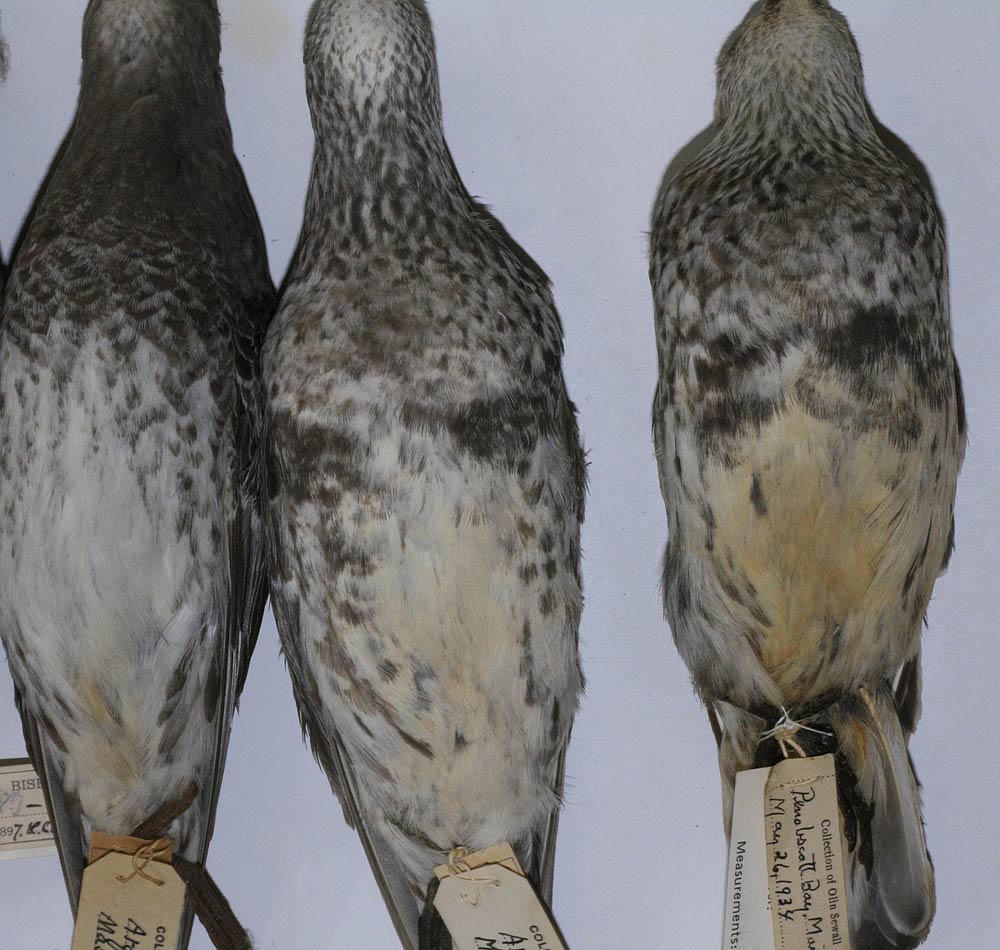
Update April 2016: added THIS LINK to more photos of PUSAs from Scotland, showing the upper- and under-wing in more detail.
Update: added photo of specimen PUSAs with black smudges on underparts - at the bottom of the page.
Update: This bird appeared to remain at SPI into May 2009 when more photos were taken by others; I've seen a couple of images, and the bird has molted further into its first-alternate plumage - it looks much more like PUSA than ROSA...
Update: I've added a note about bare parts color at the bottom of the page.
This Purple-type Sandpiper has been wintering (2008/2009) on the jetty at South Padre Island, Cameron county Texas. I photographed it on February 09, 2009 and by chance I obtained some not-great open-wing shots that suggested that this individual had more white than typical in the inner primaries and secondaries; take a look at the following seven pics, then check the research I've done to look into this matter, below this group of pics:
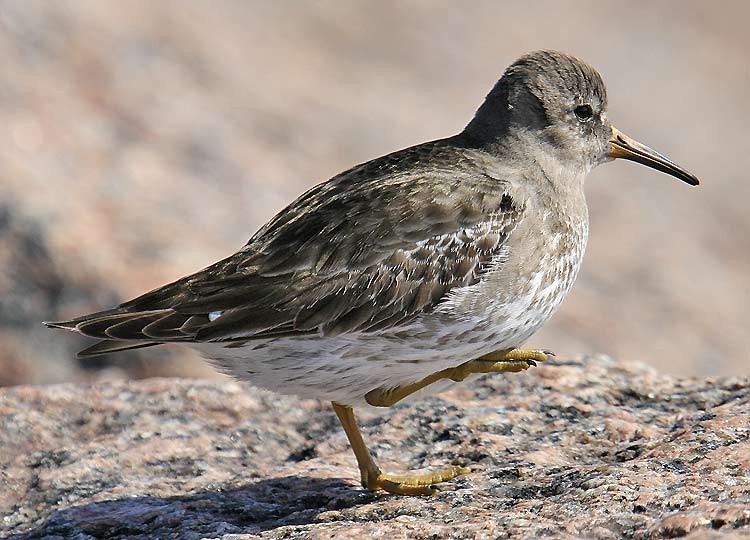
Note above and below that the legs are rather yellow (esp. compared to the Turnstone), the only orange tone being strongest on the front of the tarsus:
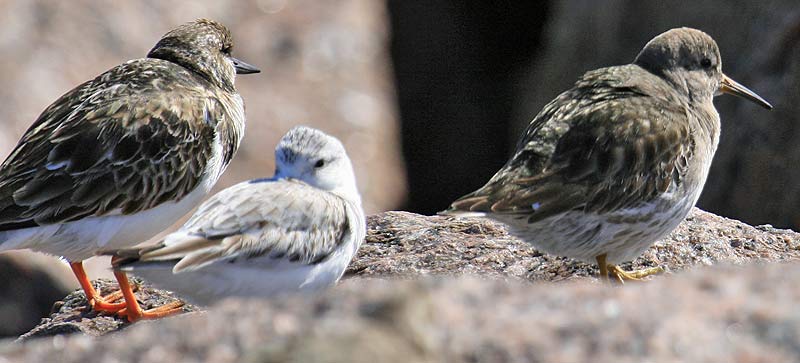
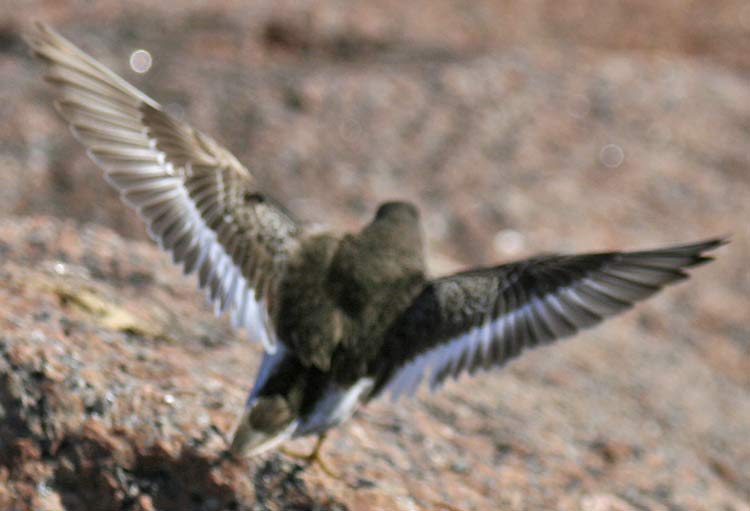
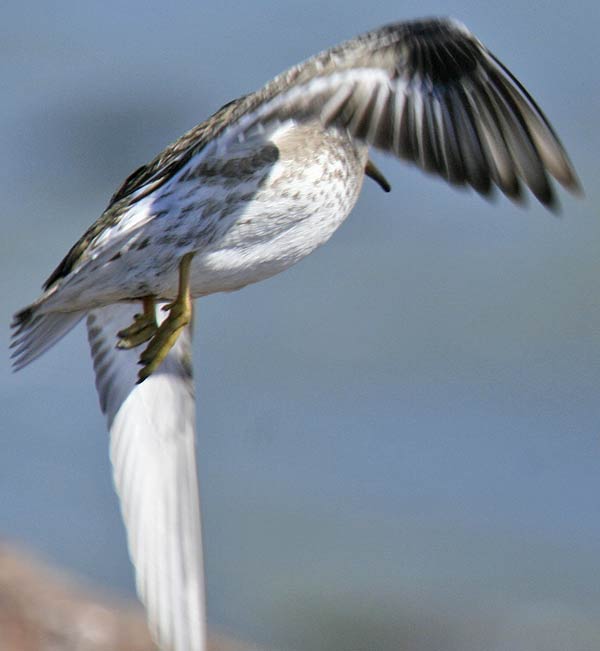
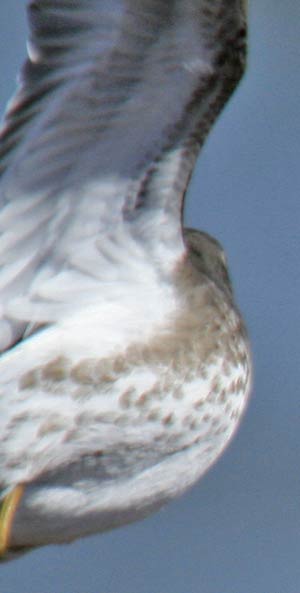
These fine images by Fernando Cerra show better detail in the flight secondaries:
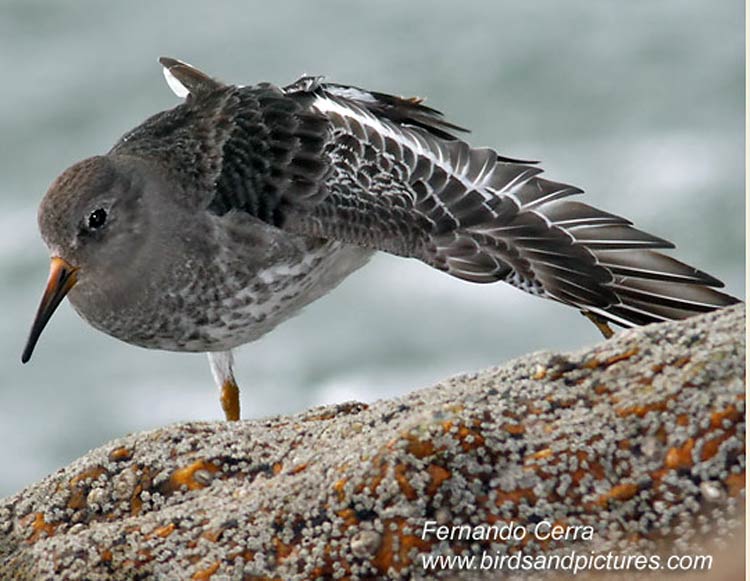
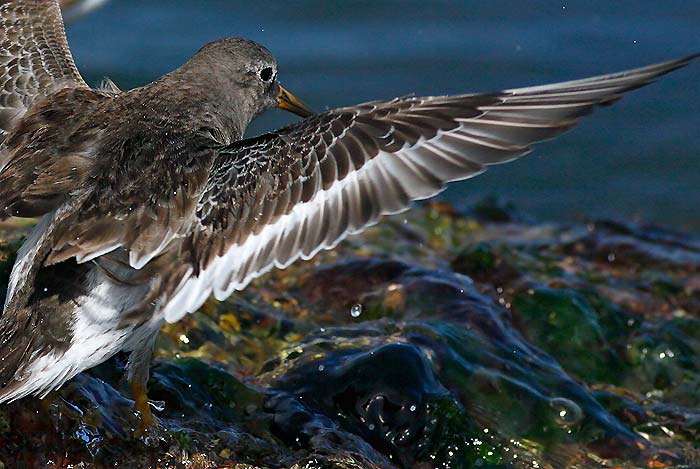
I started to privately float the tentative notion that this might have some features suggestive of Rock Sandpiper, and tried to encourage local photographers to get open-wing photos. I checked the appropriate entry in my new "Identification Guide to North American Birds - Part II" by Peter Pyle (a MUST HAVE for anyone serious about ID), and noted that he (and the Sibley Guide) mention that ROSA has more white in the primaries and secondaries than PUSA - but that in this regard the strongly migratory form tschuktschorum (breeding in NE Siberia and NW Alaska, wintering on West Coast south to north-central California) is in-between PUSA and the Bering Sea population of ROSA (ptilocnemis; breeding on St Paul Island and others in the Bering Sea; wintering in adjacent western Alaska). I noticed in my and Fernando's pics that the outer edges of P1 - P4 of the SPI bird seemed to have a bulge in the white, such that the dark outer web became narrowed close to the base:
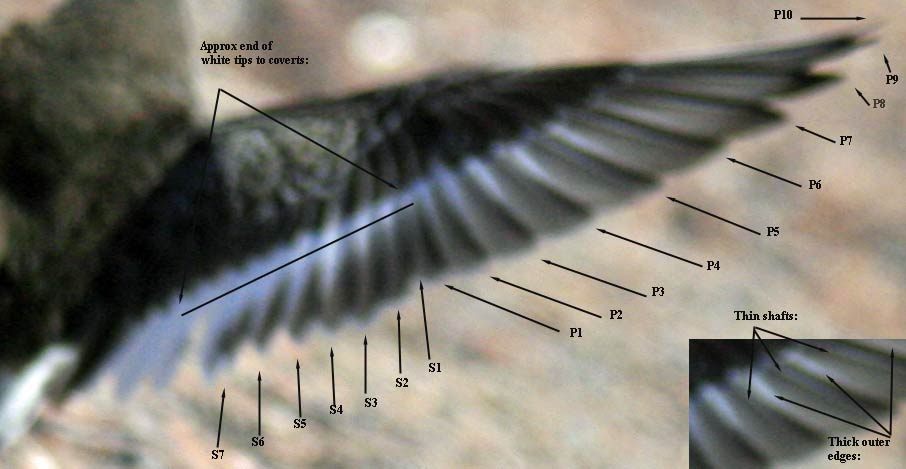
- I checked online pics of about 20 PUSAs and none seemed to show this feature. NOTE: most photos of PUSA show a single white line down each primary (the shaft); when the outer edge has thickened white it creates TWO lines of white per primary feather (see inset above) - the edge white being thicker than the shaft white.
Pyle's Part II also illustrated the first (outer) secondary of PUSA, ROSA (migratory form), and ROSA (Bering Sea form): basically PUSA has no white in the outer web, the migratory ROSAs have a very small white spot or patch near the base of the outer web, and the Bering Sea ROSAs have a large white patch near the base of the outer web of the outer secondary. In one of Fernando's pics it was clear that there was a very small patch of white on the edge of the outer web, just beyond the part covered by the white tip of the overlying greater secondary covert. NOTE: a disproportionate number of internet photos of ROSA seem to be of the Bering Sea form that has much more white than the more-migratory form we are concerned with; this is partly due to the many birders who visit St Paul Island during the breeding season when these distinctive and photogenic sandpipers are very approachable:
THE THREE ZOOMS BELOW ARE FROM ORIGINALS BY FERNANDO CERRA:-
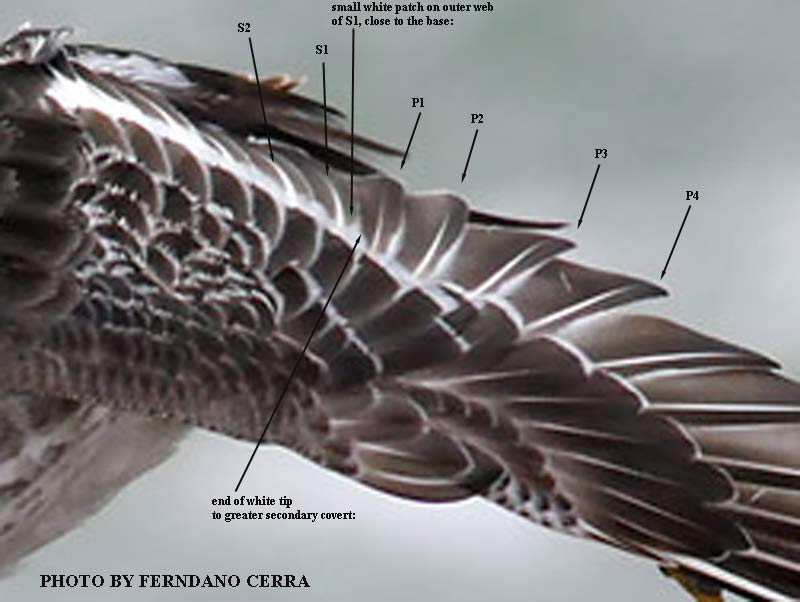
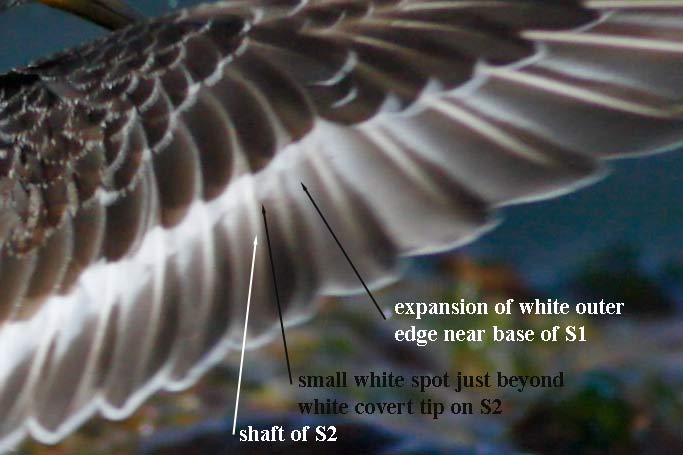
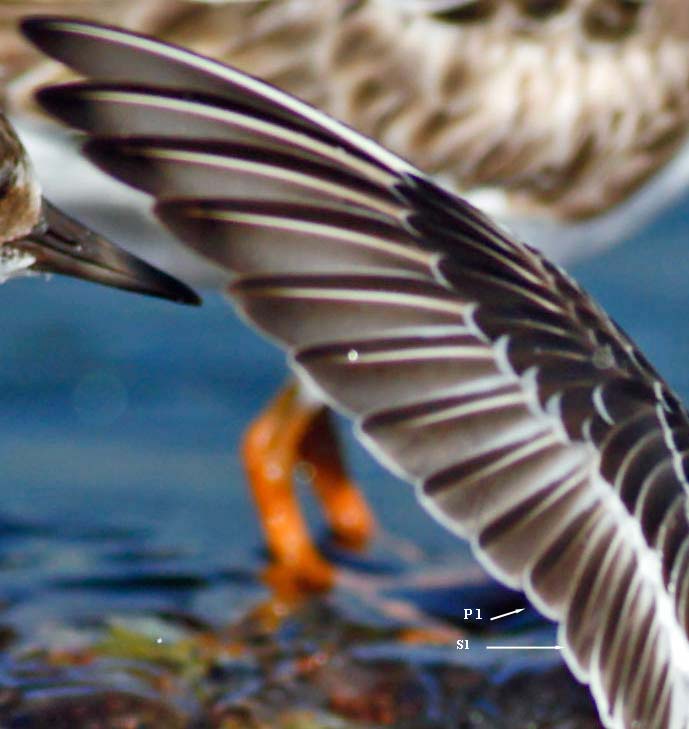
While in Chicago February 21 - 25 2009 I was able to visit the bird collection at the FMNH, Chicago, thanks to the kindness of David Willard and Geoff Williamson. I found 101 specimens of PUSA and approximately the same number of ROSA of the migratory form tschuktschorum. I carefully checked both wings of each PUSA for the extent of white edging on primaries 1 - 4, and for even the tiniest amount of white anywhere in the outer web of secondaries 1 and 2. I selected the PUSA with the maximum width of white edging on P1 - P4 (see photo below); I found no PUSA with even a suggestion of white on the outer web of S1 (other than the thin, even-width pale edge), and only two that had the tiniest white smudge near the base of the outer web of S2. Examining the bases of S1 and S2 without damaging the skins required great care, and I decided against trying to pin a skin so that I could photograph this "absent" feature.
I checked 7 or 8 skins of the migratory form of ROSA at random, and confirmed that they had significantly thicker white edging at the bases of the outer edges of P1 - P4 (yet still somewhat variable), and I also confirmed that most (but not all) had a tiny white patch on the outer part of the outer web of S1 near the base (and all had a slightly larger one on S2). I photographed the ROSA from my small sample of 7/8 that had the least amount of white in the outer edges of P1 - P4, plus two others that were more-heavily marked with white edging:
The PUSA with the most white on the outer edge of the inner primaries, out of 101 skins at FMNH, Chicago; note that the dark part of the outer web is much thicker than the white outermost edge beyond it:
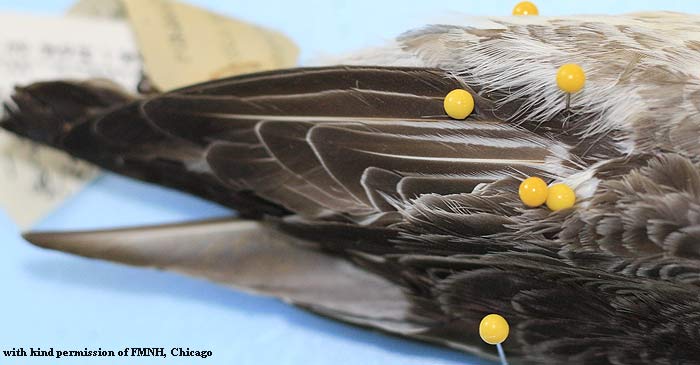
The tschuktschorum ROSA with the least white on the outer edge of the inner primaries, out of 7 or 8 randomly selected skins at FMNH, Chicago; note that the dark part of the outer web is about the same width as the white outermost edge beyond it:
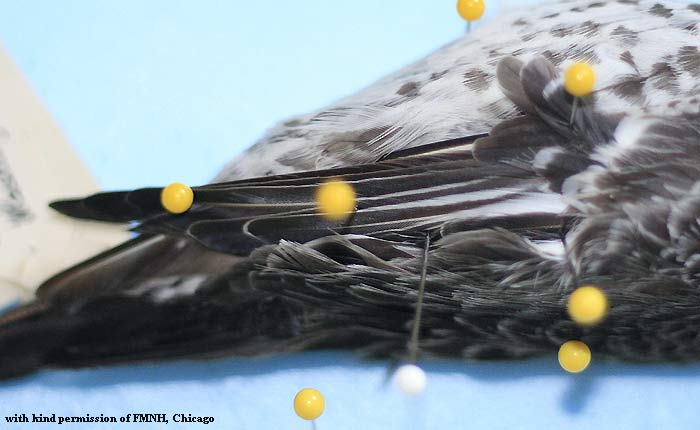
Two tschuktschorum ROSA with more white on the outer edge of the inner primaries, out of 7 or 8 randomly selected skins at FMNH, Chicago; note that the dark part of the outer web is thinner than the white outermost edge beyond it:
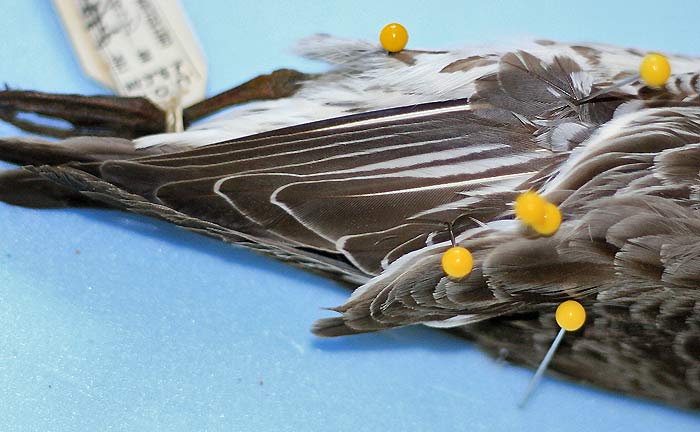
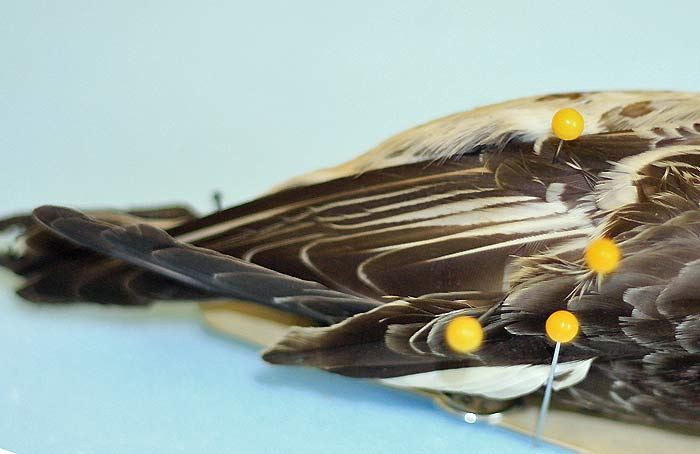
It was after gathering these data that I asked Sheridan Coffey to post to TEXBIRDS on my behalf, as these data seemed to add weight to the notion that the SPI sandpiper might possibly be a ROSA, and I wanted to encourage others both to see it and especially to try to get better open upperwing photos.
There are scans of two races of ROSA available at the Slater Museum, Washington ( click here to go to their excellent reference library of spread wings). Also in "Shorbirds of North America - the Photographic Guide" by Dennis Paulson 2005 there are more photos of various subspecies of ROSA, and also PUSA, both standing and in flight.
During a visit to NE Scotland Feb 25 - 28 2009 I was able to watch many PUSAs, and able to photograph a few; all matched my recollection of the flight shots I'd seen online and none had the bulging white on the outer edges of P1 - P4 that I'd seen in photos of the SPI individual:
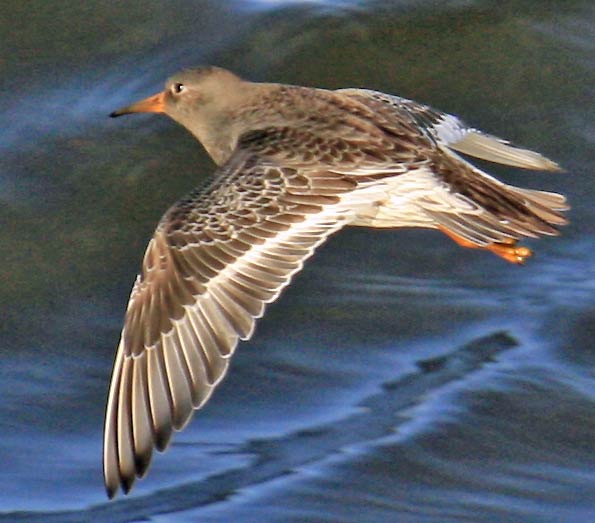
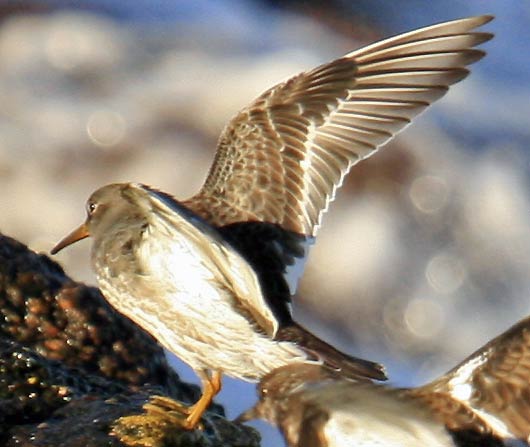
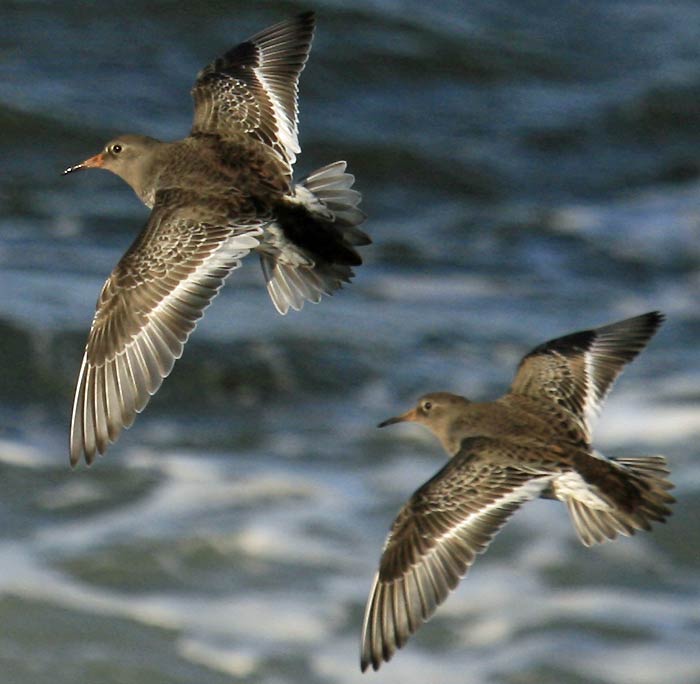
Here note the comparative leg color of the PUSA with the RUTUs, and then compare this to the 2nd photo on this page, above:
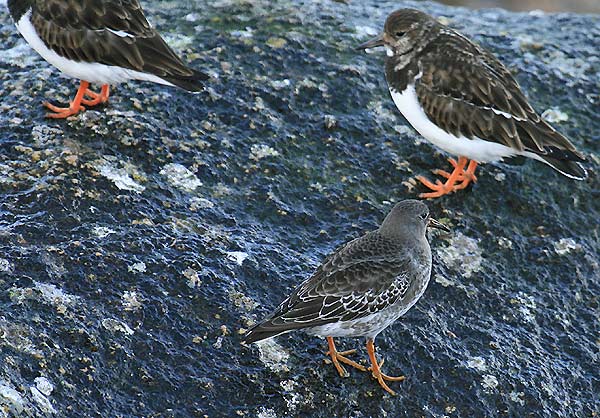
A NOTE ON BARE PARTS COLOR: Most texts mention that PUSA has more orangy legs and bill base than ROSA; I'm sure that this is true on average, but it is not hard to find photos of wintering individuals of the migratory form tschuktschorum of ROSA that have similarly orangy legs and bill-bases - here are two that I found during a brief search:
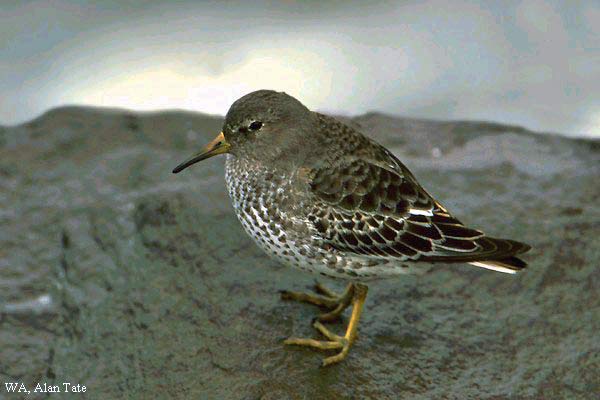
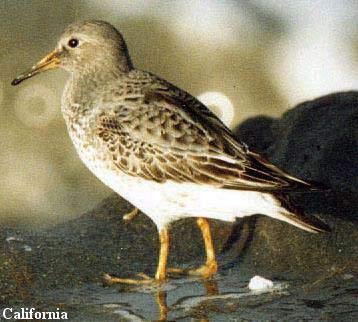
While browsing the Internet I also tried to gauge differences in the underparts markings, and while there seemed an average difference (ROSA more-often having distinct spots) I again found much overlap, with some ROSAs looking like the "typical" PUSA pattern.
A potential fly in the ointment: it seems that some PUSAs can have fairly obvious blackish smudges on the underparts, as evidenced by this photo of birds selected from
c.100 specimens at the Field Museum of Natural History, Chicago:
